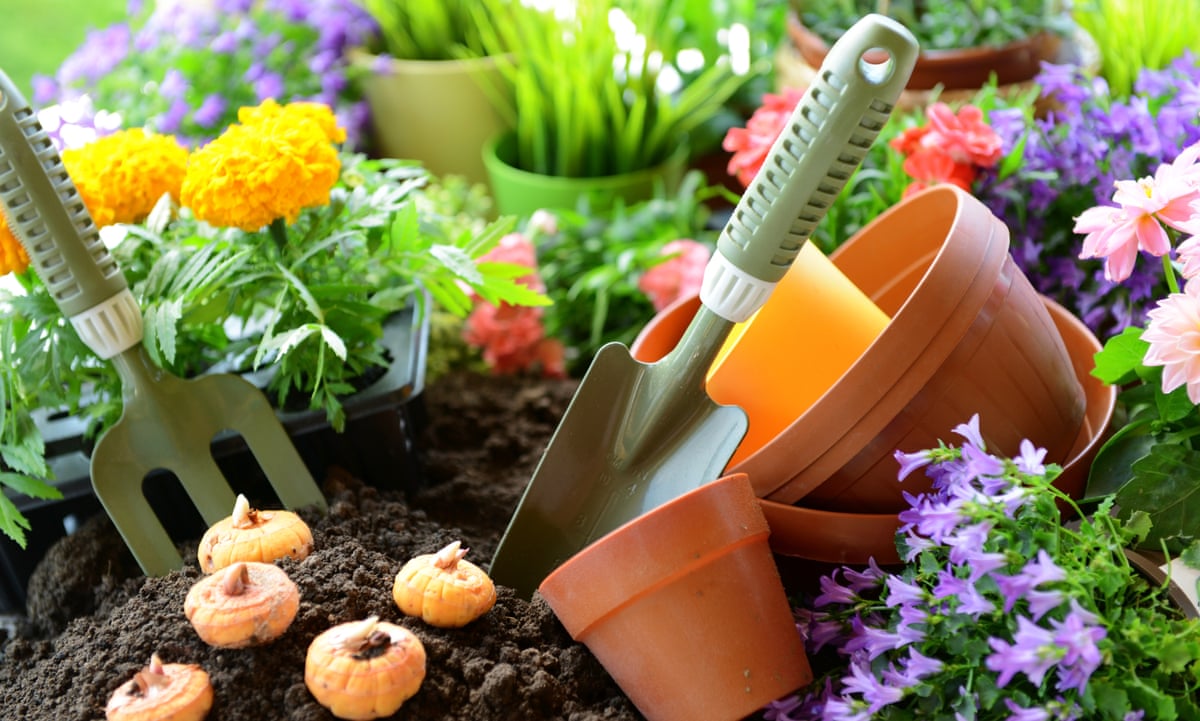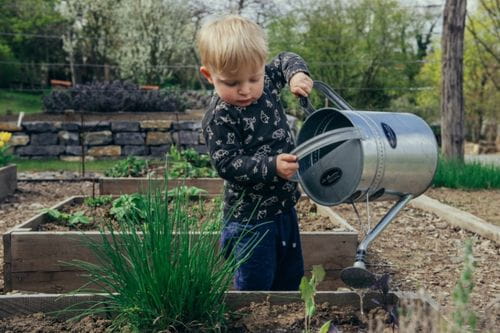Cultivate Your Skills: Top Gardening Tips for Beginners to Ensure Blooming Success
Wiki Article
The Ultimate Overview to Horticulture for Beginners: Step-by-Step Tips and Methods for Expanding a Thriving Yard
Are you all set to study the world of gardening? Look no more than "The Ultimate Guide to Horticulture for Beginners." This step-by-step guide will certainly walk you with every little thing you need to recognize to grow a growing garden. From understanding your garden space to selecting the right plants and preparing the soil, we have actually obtained you covered. Prepare yourself to release your green thumb and create an attractive, flourishing yard.Understanding Your Yard Space
Comprehending your garden space is important for developing a flourishing garden. This will certainly assist you identify which plants will grow in each location. gardening tools for beginners.Next, analyze the soil in your yard. Comprehending your dirt type will certainly direct you in picking the right plants and executing ideal soil modifications. This information will certainly help you make notified decisions regarding watering and plant placement.
Additionally, focus on any kind of microclimates within your garden. These are little locations that may differ in temperature level or moisture levels contrasted to the remainder of your yard. For instance, a south-facing wall may preserve heat, producing a warmer microclimate. Use these variants to your benefit by planting moisture-loving or heat-loving plants in these locations.
Picking the Right Plants

Next, consider your gardening objectives and choices. Are you looking to grow veggies, blossoms, or a mix of both? Do you prefer low-maintenance plants or are you happy to place in added initiative for high-yield plants? Consider the amount of time, power, and sources you are ready to purchase your yard.
Additionally, think about the area readily available in your yard. Take dimensions and plan the layout of your plants. Consider the mature size of each plant and ensure they have enough room to grow without overcrowding each other.
Finally, think of the usefulness of your plant selections. home gardening for beginners. Will you have the ability to give the necessary treatment and upkeep for your picked plants? Take into consideration aspects such as watering, feeding, pest control, and pruning
Preparing the Soil for Planting
Once you have actually chosen the right plants for your thriving yard, it's time to dive into the important job of preparing the soil for growing. Take an example and test its pH degrees, as different plants grow in various pH ranges.
Once the soil is all set, create furrows or holes for planting. The depth and spacing will depend on the particular demands of your selected plants, so refer to the seed packets or plant labels for assistance. Carefully put the plants in their assigned places, making certain that the origins are covered with dirt. Strongly push the dirt around the base of each plant to get rid of any type of air pockets.
As you water, be cautious not to clean away the dirt or damage the fragile plants. With appropriate soil prep work, your yard will be well-appointed to sustain the growth and success of your plants.
Watering and Feeding Strategies
find here After preparing the soil for growing, it's important to recognize efficient watering and feeding techniques to make sure the health and wellness and development of your garden. It's important to strike an equilibrium when it comes to watering. Overwatering can lead to root rot and other illness, while underwatering can lead to stunted development and wilting. The key is to supply adequate water to keep the soil continually moist however not filled. One means to gauge if your plants require watering is by sticking your finger about an inch into the dirt. If it feels dry, it's time to water. When watering, aim for the base of the plants, as wetting the leaves can motivate conditions. When it comes to fertilizing, it's important to provide your plants the nutrients they require to grow. Organic fertilizers, such as compost or well-rotted manure, are outstanding options as they give a slow-moving release of nutrients. It's finest to use plant foods in very early springtime or late loss, following the instructions on the package. Keep in mind to water your plants after fertilizing to assist the nutrients reach the roots. By grasping these watering and fertilizing methods, you'll be well on your method to a flourishing garden.Preserving a Healthy Garden
To maintain a healthy and balanced yard, you must regularly inspect your plants for indicators of illness or insects. By doing this, you can catch any kind of concerns early and take the needed steps to stop them from causing and spreading out damages to your entire yard. Try to find any type of unusual places on leaves, wilting or yellowing vegetation, or holes in the leaves, as these could be signs of diseases or parasites. It is essential to take prompt action. if you notice any of these indications.One way to fight parasites is by utilizing all-natural remedies such as insecticidal soaps or neem oil. These work in managing usual pests like aphids, termites, and whiteflies without damaging useful pests. Another technique is to urge beneficial bugs like lacewings and ladybugs, which feed on garden visit here parasites. Growing flowers such as daisies, sunflowers, and marigolds will certainly bring in these beneficial bugs to your garden.
Along with parasites, diseases can also affect your plants. To avoid the spread of illness, it is essential to exercise great yard hygiene. This includes eliminating any type of infected plants or leaves, disinfecting your horticulture tools, and preventing over-watering. Appropriate spacing in between plants and great air blood circulation can additionally assist prevent the spread of illness.
Conclusion
By comprehending your yard area, selecting the right plants, preparing the dirt, and executing proper watering and feeding techniques, you can develop a flourishing yard. With persistence and devotion, you'll soon be enjoying the appeal and bounty of your own growing garden.Use these variations to your advantage by growing heat-loving or moisture-loving plants in these locations.

Report this wiki page